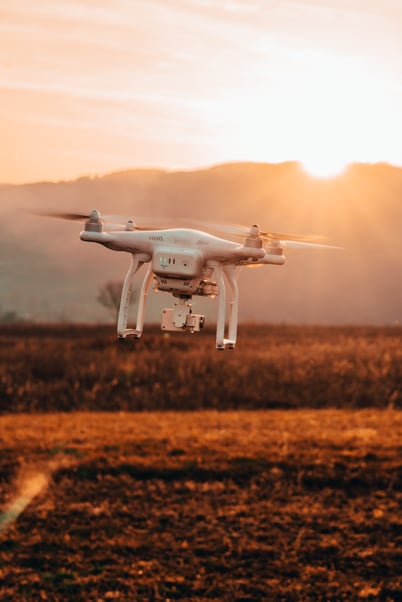REDWOOD LOGIN
Redwood PortalLTL
SCS
SCS Support
Rockfarm
 In the last 15 years or so, the world has witnessed the rise of drones.
In the last 15 years or so, the world has witnessed the rise of drones.
These nifty pieces of technology have been used by everyone from hobbyists just looking for a new toy to fly around to the military utilizing them on scouting missions and training exercises.
But in more recent years, drone technology has seen a bit of use in various industries for a wide variety of logistics tasks. Out of the handful of companies that are already doing this, Amazon, UPS, and Alphabet (Google’s parent company) are the most notable.
So, get out your remote transmitter, put your drone in the air and let’s take a look at the 2 most promising ways that drones are more than likely going to be utilized in the logistics industry at large over the next few years…
… And maybe even a couple ways that you can experiment with them in your warehouse today.
One area of use that has caught the eye of many larger warehouses is that of inventory management.
Now, most drones are pretty lightweight and cannot carry much of a heavy load at one time. However, there are also a few much larger, albeit much more expensive options coming onto the market every day that are perfectly capable of carrying larger packages upwards of around 40 pounds as is the case with the Vulcan UAV system.
Amazon is already using automated shelves that are designed to move across defined paths to minimize workers needs to constantly have to search for inventory, walking back and forth for hours on end. This is a step forward in the right direction.
But could you imagine if all you had to do was fly a drone through the rows of shelving, pick up the product and fly it back to your workstation I bet? Or better yet… an autonomous system that is controlled by gestures or a system that is 100% “on rails” as they say.
Furthermore, what if you could program drones to do the actual inventory counts and logs versus paying another person to do it? This would save time as drones can read labels and other data much faster than the naked human eye. As a bonus, it would free up workers time who normally handle those tasks, to redirect their attention to more urgent matters.
And if that sounds too good to be true, it is not! The folks over at the Hardis Group have designed a drone that does exactly that!
Being able to automate some of your inventory management efforts is all fine and good, but what about when it comes time to get some of that inventory out your customers, B2B deliveries, or from warehouse to warehouse?
This is an area in which laws and current regulations here in the US are standing in the way. It is an ongoing legal struggle between companies such as Amazon and UPS against the United States government, the Department of Transportation and the FAA. Our current laws have regulatory standards in place when it comes to the use of airspace, and unfortunately, drone technology still has a long way to go in proving to that powers that be that it is a viable supply chain tool and its use can be monitored and adhere to all applicable laws.
The problem is that the government simply has not made many advances toward doing so.
The other issue is licensing. There is not even a regulatory system in place for how to license pilots to operate this equipment safely. This would require the training of pilots in a brand new system that is agreed to and upheld nationwide.
Until the day comes, which we hope will be sooner rather than later, that the government lifts some of these bans and starts really looking into the technology through a different colored lens, drone technology will keep improving. And at this rate, by the time that happens, the industry can put a system into place nationwide almost immediately as we would have had more than enough time to perfect it in controlled environments. A good example of this experimentation is the Amazon Prime Air trials and testing.
The drone market is huge right now and innovations are being made every single day by drone enthusiasts, analysts, and big businesses alike. It is a $29.06 billion dollar industry that is only going to continue getting larger year after year.